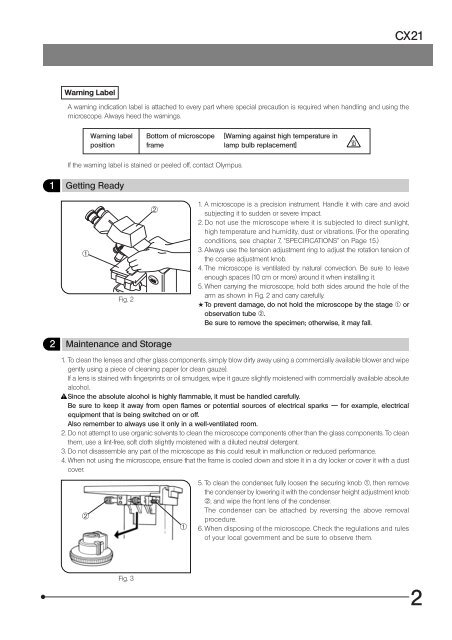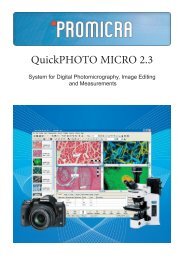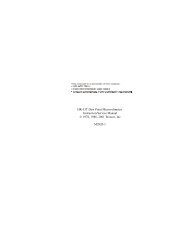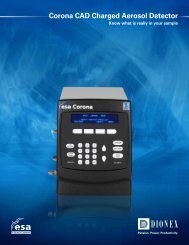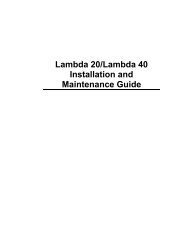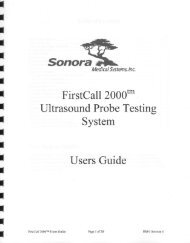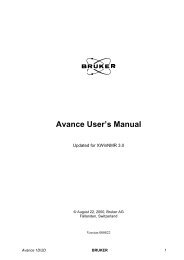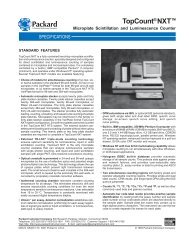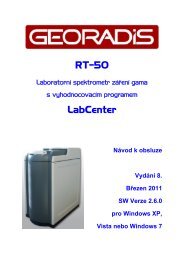Create successful ePaper yourself
Turn your PDF publications into a flip-book with our unique Google optimized e-Paper software.
<strong>CX21</strong>Warning LabelA warning indication label is attached to every part where special precaution is required when handling and using themicroscope. Always heed the warnings.Warning labelpositionBottom of microscopeframe[Warning against high temperature inlamp bulb replacement]If the warning label is stained or peeled off, contact Olympus.1 Getting Ready@Fig. 2²1. A microscope is a precision instrument. Handle it with care and avoidsubjecting it to sudden or severe impact.2. Do not use the microscope where it is subjected to direct sunlight,high temperature and humidity, dust or vibrations. (For the operatingconditions, see chapter 7, “SPECIFICATIONS” on Page 15.)3. Always use the tension adjustment ring to adjust the rotation tension ofthe coarse adjustment knob.4. The microscope is ventilated by natural convection. Be sure to leaveenough spaces (10 cm or more) around it when installing it.5. When carrying the microscope, hold both sides around the hole of thearm as shown in Fig. 2 and carry carefully.# To prevent damage, do not hold the microscope by the stage 1 orobservation tube 2.Be sure to remove the specimen; otherwise, it may fall.2 Maintenance and Storage1. To clean the lenses and other glass components, simply blow dirty away using a commercially available blower and wipegently using a piece of cleaning paper (or clean gauze).If a lens is stained with fingerprints or oil smudges, wipe it gauze slightly moistened with commercially available absolutealcohol.Since the absolute alcohol is highly flammable, it must be handled carefully.Be sure to keep it away from open flames or potential sources of electrical sparks –– for example, electricalequipment that is being switched on or off.Also remember to always use it only in a well-ventilated room.2. Do not attempt to use organic solvents to clean the microscope components other than the glass components. To cleanthem, use a lint-free, soft cloth slightly moistened with a diluted neutral detergent.3. Do not disassemble any part of the microscope as this could result in malfunction or reduced performance.4. When not using the microscope, ensure that the frame is cooled down and store it in a dry locker or cover it with a dustcover.²@5. To clean the condenser, fully loosen the securing knob 1, then removethe condenser by lowering it with the condenser height adjustment knob2, and wipe the front lens of the condenser.The condenser can be attached by reversing the above removalprocedure.6. When disposing of the microscope. Check the regulations and rulesof your local government and be sure to observe them.Fig. 32


